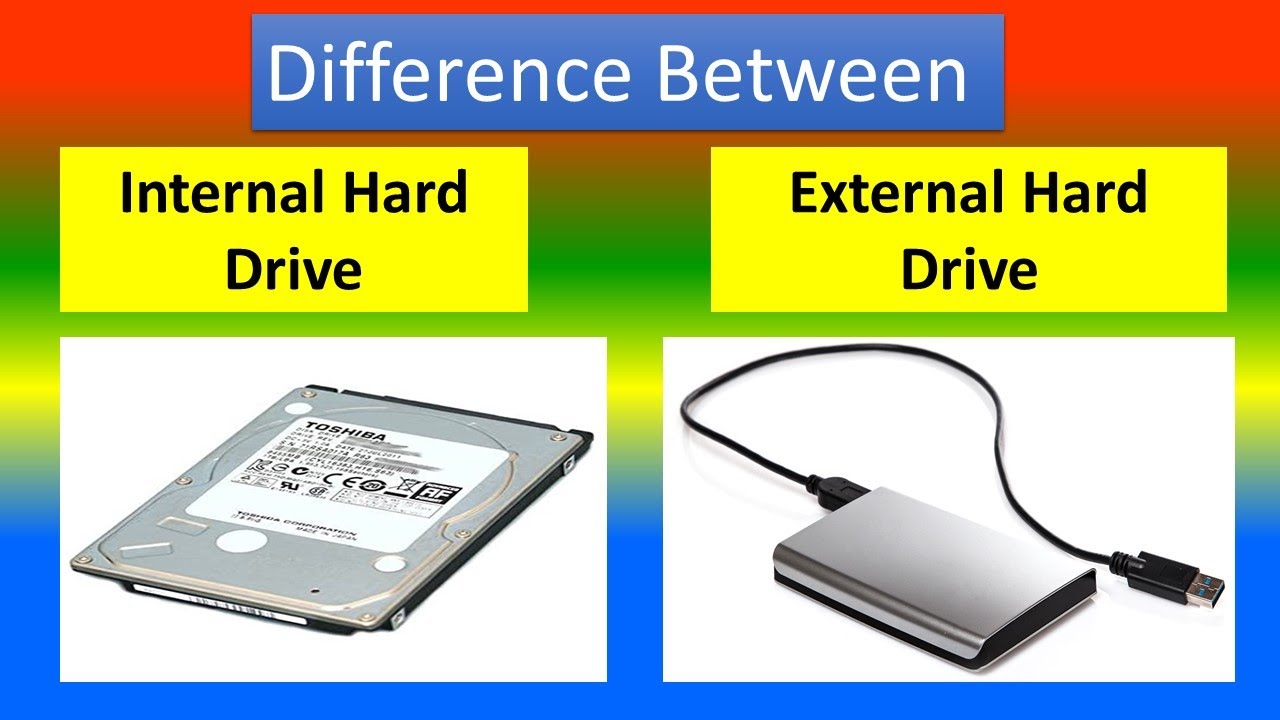When it comes to your data and storage needs, there are two main types of storage devices: External Hard Drives and Internal Drives. Each of these can be incredibly useful for storing large amounts of data, but the choice between them depends on usage and preference.
In this blog post, we will explore the differences between the two types of hard drives, taking into account qualities such as security, convenience, operating system compatibility, and cost-effectiveness.
Read these articles properly to find out which type of hard drive best suits your purpose!
What is an External Hard Drive?
An External Hard Drive is a must-have piece of technology for those who work with large files or store a lot of data. It is an external storage device, usually disk-shaped, that can be easily connected to a laptop computer or other digital device via a cable, USB port, or wirelessly.
Regardless of the size or style, all external hard drives allow users to store and retrieve data with much more ease and efficiency than more traditional storage devices.
What are its Features?
- Large Capacity
External SSD is a great way for users to back up and store large amounts of data. They offer huge storage capacities that make it possible to keep entire file collections readily available without occupying any physical space.
Whether you are a tech-savvy home user or have advanced IT needs like small businesses and enterprises, Seagate External Hard Drive can be used to increase storage capacity and add an extra layer of security for data.
- Portability
If you want to work on the go or need to move large files from one place to another, an external hard drive is a perfect solution. Additionally, external hard drives offer larger storage capacities than most other portable hardware solutions available – perfect for backing up files or carrying video and music libraries.
- Lightweight
Because of its small size, users often forget they even have such a powerful device, but being able to retrieve data on the spot because of its portability is invaluable. With the added capacity and capability of an external hard drive, important documents, photos, videos, and music files can be stored in multiple locations for quick access.
- Enhanced Security
External hard drives can be a great way to increase the security of your data. Using cloud storage services has become commonplace for many people, but the user experience can suffer from slow loading times and potential privacy breaches.
With an SSD External Hard Drive, you will have physical control over your data and faster access speeds than cloud services. Plus, most hard drives are password protected, ensuring that only you have access to the stored information.
Disadvantages
- Quite noisy
External drives are compact, convenient devices for backing up data and transferring files from one place to another. However, a common complaint about them is that they can be quite noisy.
These storage devices work by spinning the disks inside them at high speeds to quickly transfer data back and forth, which is why you may hear whirring or spinning sounds from them. While most of these noises are normal, they can be quite distracting for those who are sensitive to noise; some people also hear a slight rattling sound sometimes.
- Heavy power consumption
One of the main disadvantages of using external hard drives is their heavy power consumption. Many external drives require their power source in addition to a connection to a computer, which means extra strain and cost for those using them.
- Relies mostly on moving parts
Although convenient and user-friendly, an external hard drive relies on moving parts to store data, making it more prone to technical issues than drives with solid-state technology. External drives can be affected by environmental factors such as dust, dirt, and temperature, resulting in the need for regular maintenance.
What is an Internal Drive?
An Internal Hard Drive is a type of non-volatile storage device that contains a spinning disk or disk and uses magnetic technologies to read and write data. This means that data stored on an internal hard drive persists even when the computer is turned off.
Internal hard drives are commonly used as the primary storage device in computers, laptops, and external network storage solutions, as they can store large amounts of data at a relatively low cost.
Internal Hard Drive Features
- Largest Storage Capacity
When it comes to storing large amounts of digital data, internal hard drives often prove to be the most viable option. Internal Drives are built directly into your computer, allowing for easy access and use. Unlike external hard drives and flash drives, which typically hold up to 8 TB or 10 TB, respectively, internal hard drives offer much larger storage capacities that can reach up to 24 TB.
Such a large amount of storage is perfect for high-end gaming systems that require large downloads, businesses that need to store large amounts of data, or content creators who want to keep lots of digital files.
- Affordability
An Internal SSD is a great option for any budget-minded computer user. With their low cost and high capacity, an affordable way to store large amounts of data on a PC or laptop.
Internal hard drives also make it easy to transfer files between devices, so quickly that you don’t have to worry about missing out on something important during the transfer process. Overall, an internal hard drive is a great investment for those looking for an affordable way to back up their data without compromising on quality or performance.
Disadvantages
- Requires more wiring
Installing an internal hard disk in a computer can be faster and more flexible than other storage options, but one of the main drawbacks is the cabling required. Installing an internal HDD requires a power cable connection as well as a data cable. Managing these additional requirements can be tedious and time-consuming, especially when compared to connecting an external HDD that only requires a USB cable.
- Non Replaceable or Upgradable
The most notable thing is that this kind of storage device is not replaceable or upgradeable – once it breaks down or its storage capacity reaches its peak, you will have to buy a new one. This can be a costly endeavor and also means that if you want to get rid of the old drive, you won’t be able to keep your data.
Which is Better For You?
When it comes to choosing which Drive is better, the answer is very subjective. However, External hard drives are better because they are less expensive, more convenient, and easier to use and should be used for backups.
When it comes to internal storage, users need it for gaming, video editing, applications, and of course, work.
When building a PC, choose internal storage for most tasks and external drives for everything else. External drives are also used in NAS, which can help you centralize data backups, but they come at a price.
Now that you know which hard drive will work for you, it’s important that you also optimize the hard disk with EaseUS Partition Master.
Wrapping Up
If you’re in the market for an external or internal hard drive, it’s important to know the difference between the two before making a purchase. Internal SSDs are typically faster and more reliable than External SSDs, but they can be more expensive. External hard drives offer portability and convenience, but they may not be as fast or reliable.
Storage Parts Direct has a wide selection of internal, and external hard drives, storage devices, and hard drive caddies to choose from, so you’ll find the right hard drive for your needs.
Visit our website Ramjet.com today to browse our selection and find the right hard drive for you.












